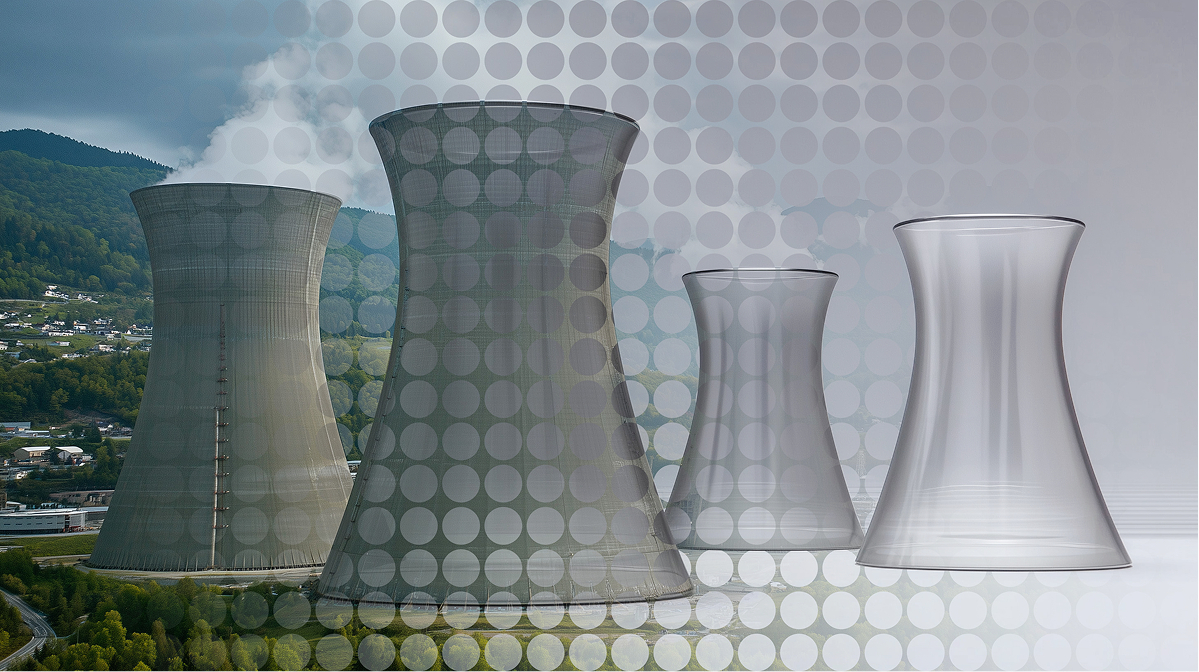The Nuclear RAB levy explained: what it means, and why transparency matters
The UK’s new nuclear trade deal with the US has made headlines. Nuclear will play an important role in a balanced energy system: clean, steady baseload alongside fast-growing renewables.

From 1 December 2025, a new charge will appear on UK electricity bills: the Nuclear RAB levy. For the last quarter of 2025, it’s set at £3.540 for every megawatt-hour of electricity used - a rate that has surprised most in the industry.
This isn’t something your supplier has chosen to add. It’s a government policy. And it applies to everyone - households and businesses alike.
So, what exactly is this levy? And why does it matter for businesses already trying to manage unpredictable energy costs?
Why nuclear, why now?
The UK wants to build a power system that’s bigger, more resilient, and less dependent on imported gas. Renewables like wind and solar are growing quickly, but they don’t generate around the clock. Gas has been used to fill the gaps, but it leaves us all exposed to global price shocks - as we saw during the energy crisis.
Nuclear power is being positioned as the steady third pillar: it generates day and night, and doesn’t rely on the weather. By 2050, the government’s ambition is for nuclear to provide up to 25% of the UK’s electricity, alongside major growth in renewables.
Beyond energy security, there’s a wider economic move to be made here as the UK government announced a series of UK-US trade deals last week - “The biggest backing of nuclear in a generation is leading to a private sector boom, cementing the UK as a world-leading investment destination for nuclear with US companies entering the market to create jobs and growth for working people in Britain’s industrial heartlands”
One of the large investments is for Sizewell C, which is suggested to deliver clean power for 6 million homes and save up to £2Bn in energy bills. This is a real step-change, but the deal comes with an inevitable cost in the form of the Regulated Asset Base (RAB) levy. Rather than waiting until the plant is finished to recover costs, the levy collects parts of the funding upfront from all energy users.
To make that happen, the UK has committed to a new project: Sizewell C. It’s a large nuclear power station planned for the Suffolk coast that claims it will deliver cleaner energy to 6 million households and cut bills by £2bn in the long term. Sounds like a good deal. However those savings won’t hit bottom lines anytime soon - the project will take well over a decade to complete and will cost tens of £billions. According to Cornwall Insights, the project is expected to add more than £200,000 a year to major businesses’ energy bills.
And that’s where the levy comes in.
What’s behind this new charge?
Traditionally, nuclear investors funded the build and recovered costs once that station started producing and selling electricity into the grid.
This time, the government has chosen a different approach: the Regulated Asset Base (RAB) model.
Here’s the simple version:
Instead of investors waiting until Sizewell C is built, funding is collected upfront.
That money is taken directly from electricity customers — both households and businesses — through a new line on their bills.
In practice, this means we all start paying years before the station produces a single unit of electricity.
For businesses, this adds another layer of what are called non-power costs. These are the policy and network charges that sit on top of the actual cost of energy, and they can often be unpredictable.
What’s even more eye-opening is following the way exemptions work. Some businesses (like 500 of the biggest electricity users in the UK) will be officially exempt from paying the Nuclear RAB levy, but that will ultimately mean that the residual costs are paid for in some way, by the rest of us - there’s a great breakdown of that here in the FT if you’re interested in going deeper.
The headlines
The scheme first introduced a small charge to households. Early forecasts for businesses suggested a cost closer to £0.30/MWh
With the start date brought forward and a large part of the financing being collected in advance, the actual rate for Q4 2025 has been set at £3.540/MWh, beginning December 1
An additional Operational Costs Levy of £0.0028 per MWh will also begin once the scheme goes live (it is anticipated that the Operational Cost Levy will be invoiced first on 28 November 2025, with payment due on 5 December 2025)
The levy applies to all electricity customers, no matter their supplier or contract.
For any business trying to plan ahead, that kind of jump matters. Energy budgets are already difficult to manage when costs can rise suddenly and without much warning.
What this means for the future of energy
From the government’s perspective, the Nuclear RAB levy is a way to get nuclear projects moving. By guaranteeing that the money is collected upfront, they make it easier to finance big, long-term infrastructure.
The idea is that:
Renewables provide power when the wind blows and the sun shines
Nuclear provides stability when they don’t
Gas plays a smaller back-up role, reducing exposure to volatile global markets
In theory, that should mean a more stable system and more predictable bills in the long run.
But in the short term, it means higher costs for households and businesses that don’t get a choice. It highlights a bigger issue: how should the UK fund major energy projects, and who carries the burden?
Moving forward with transparency
 We can’t change government-set charges like the Nuclear RAB levy. But we can explain them clearly, show you exactly how they appear on your bill, and fight for a system that treats customers more fairly (more on that to come).
We can’t change government-set charges like the Nuclear RAB levy. But we can explain them clearly, show you exactly how they appear on your bill, and fight for a system that treats customers more fairly (more on that to come).
Non-power costs like this shouldn’t be hidden in the small print or passed through differently depending on your supplier. They should be flat, fixed, and transparent - the same for everyone. That visibility will help businesses plan with more confidence and give customers back some control.
If you’re reading this, speak to your supplier and ask how and when this will show up in your bill.
Building something better
The Nuclear RAB levy is one more example of how today’s system loads costs onto customers without choice or clarity.
That’s exactly why we created RED™.
RED™ is a modern utility experience that removes unnecessary wholesale markups, resulting in lower cost bills and a fairer system for all. It connects businesses directly with renewable generators, so you see where your money goes - and more of it flows back to the people actually producing the power.
So far, RED™ has delivered over £30 million in value to more than 3,000 UK sites. That’s proof that energy can be more transparent, more predictable, and ultimately fairer.
